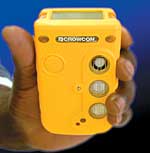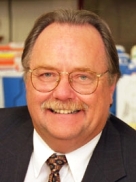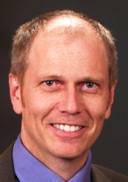
Q&A: Saving the Exposure Limits
- By Jerry Laws
- Feb 01, 2009
The
Foundation for Occupational Health & Safety recently created the Sustainable TLV®/BEI® Fund to ensure the continued development of the Threshold Limit Values (TLVs®) and Biological Exposure Indices (BEIs®). FOHS President Dean Lillquist, Ph.D., CIH, and
American Conference of Governmental Industrial Hygienists (ACGIH®) board chair Larry Gibbs, MEd, MPH, CIH, discussed the new fund Dec. 11, 2008, one week after the FOHS announced it. This Q&A is the result.
ACGIH has slightly more than 3,000 members, Executive Director Tony Rizzuto said.
OH&S: Why is the fund needed now?
 |
Larry Gibbs |
Larry Gibbs:
I think there are really two reasons. One is, in the past, the ACGIH TLV/BEI program was pretty much self-supportive through publications, sales, and some of the related projects. But I think there are two things that have come together right now.
One is certainly litigation expenses, and also, in the current economy, declining publication revenues have really led us to explore a number of alternatives. There's also an evident need to increase the rate at which occupational exposure values are being produced. I just participated yesterday in a panel with the California Industrial Hygiene Council where we were looking at this as a group. In the U.S. and also worldwide, the number of chemicals in commerce, especially high-production-volume chemicals, is in the thousands. And yet, if you look at available occupational exposure values from all sources, there are less than a thousand total. So there remains a huge gap between available occupational exposure values and what is needed.
In this country particularly, you have a situation where the federal ones aren’t being updated and haven’t for the longest time.
Gibbs: I want to be clear as we separate – absolutely – on occupational exposure standards, which are the legal [ones], and what ACGIH develops, which are guidelines. I want to be very clear on that differentiation. What ACGIH is really producing, the Threshold Limit Values, are based on science-based issues related to health of those particular materials, which then are intended for use by the professionals in applying their craft. Whenever we talk about the TLVs, as I did yesterday with a group of industrial hygienists, I say, 'You really just don't look at the number; you look at the whole application, documentation of where that TLV came from, and then apply it in your workplace.'
It struck me as ironic that ACGIH would be sued to stop these from being updated because of the way you’ve always said they should be applied. I understand why people might fight one that’s mandatory and OSHA-derived or -required, but I don't understand why somebody would go after these. How do you see that?
Gibbs: First of all, we weren't the only defendant in the case. This was brought by some trade associations. I don't know what their motives are specifically, but certainly whether it was intended or unintended consequences, it's leading us somewhat to look at the need for funding to continue some of these programs.
The cost of defending yourself in litigation is extreme. Even though the lawsuit was summarily defeated this past summer – we're pleased that the court recognized that and really upheld ACGIH's right to develop and provide science-based occupational exposure values, and that's been the core value upon which ACGIH was founded over 60 years ago -- the overall expenses associated with that litigation defense, which took over four years, really resulted in both the actual cost and the redirection of the human energy. That also diminished ACGIH's reserves and also prevented us from exploring opportunities that could have sustained or even grown our ability to do more during that time period.
It has impact on everyone that's involved in it. We don't currently have any legal challenge remaining, but we're aware that we live in a very litigious environment, so it could happen again. The one difference is we do have precedent from our defense this past summer that could be useful to us.
How much money do you hope the fund will manage to raise, and from what sources?
 |
Dean Lillquist |
Dean Lillquist: The goal is to have something that's sustainable. A dollar figure's hard to come up with, but projecting out, we’re talking in the neighborhood of $5 [million] to $10 million over the next 10 years.
Gibbs: One of the things we've been looking at is to create a sustainable support system. And I think in this economy and these days, that is something that makes a lot of sense. We hope to be able to call upon everyone involved in worker protection to participate: trade organizations, industry employers, societies – everyone who will benefit from the continued production of occupational exposure values.
I believe the future of our profession is dependent upon working together to support continued development of occupational exposure values.
You're talking about a pool well beyond the CIH or industrial hygienist ranks?
Gibbs: Absolutely. I really believe you have to look at, where's the benefit going to come from this? The goal is to continue what we do as our core value, and that is to develop science-based information to help protect workers in the work environment. The stakeholders in that include all of those groups that we just spoke about.
Almost any employer has a stake in it, if the employer chooses to realize it.
Gibbs: Absolutely.
So you want to get the word out to the whole of the safety community, beyond industrial hygienists -- and through them to the CEOs, to the top ranks -- to build awareness?
Gibbs: I think that occupational exposure values, such as TLVs and BEIs, are really vital to many professionals, and they're widely recognized around the world because of the science bases that are used in the development of them. . . .
Given the direction of the European Union with its emerging REACH program, having scientifically based occupational exposure values is more important than ever. With the huge gap between the number of chemicals in commercial use and the number of chemicals for which occupational exposure values exist, that need is evident.
Many of the alternatives being proposed – including the REACH approach – use very conservative models that have the potential to severely limit entities' continued commercial chemical development in these areas. [REACH and the reauthorization of the Toxic Substances Control Act in the United States also will have a significant effect.] The basis of assessing risk associated with any chemical use starts with that scientific basis of relationship of health effects and exposures.
I expected the chemical community and much of U.S. industry would now be aware of REACH and concerned about it. Maybe some of the job you're trying to do to make them aware of the value of exposure limits is already done. Is that true?
Gibbs: I think it's just starting. But I think it's an important part of what needs to be done. . . . I think people are still somewhat waiting to see what's going to happen with REACH. There's some wait and see. But at the same time, if you wait and see, you get behind the leading indicators, if you will.
There's really a need to continue marching forward. I think the science-based approach is the one that works well. I think there's certainly a need for prudent approaches to working with materials that don't have good occupational exposure values associated with them; the basis of that goes to understanding what they are and how they work and how they react, and that's the science-based approached.
Going back a bit, you never really answered, Dean, from what sources you hope to obtain the money.
Lillquist: I think Larry talked about a broad-reach approach.
Asking industry to pony up?
Lillquist: I think it extends beyond the practicing professionals. I think it extends into all areas, all segments that have used and applied ACGIH TLVs and BEIs. That includes industry, that includes trade organizations, professional societies, labor, and of course private donations, as well. Possibly even foundations.
I hope stakeholders – and there are so many of them – do appreciate the value in these and see that it’s in their interest, not to their detriment, to see them advanced for so many more substances.
Lillquist: Representatives of all of these groups – small segments – we've discussed it with them. And to a person, they've all been very receptive. We’ll see how this progresses in terms of fundraising and being able to generate some donations. But certainly everybody's been very positive and supportive on a conceptual level.
I'm glad to hear that. You said make it sustainable and then mentioned this $5 million to $10 million figure over a period of years. That would sustain it for the foreseeable future?
Gibbs: That's the ultimate goal. Right now, we could put any figure out there. Ultimately, it really depends on what the rate of development needs are. We'd want to be able to, hopefully, move that figure as needed to create that sustainable approach. It's very similar to an endowment type of activity, where you have a basis from which you can work without drawing down the principal.
Right. Is part of the object to not just get a lot of sources to put money into the fund and help sustain this, but also get more help in developing the exposure limits themselves?
Gibbs: Absolutely. I think if we're going to increase the rate of production and development of these, there are a lot challenges with that. They're not easy to produce – it takes a lot of time, effort, and specific expertise to go through all this to have a quality document developed. And there is some self-limiting area in there, but at the same time, we believe there is opportunity to increase that rate somewhat. To do that, we need additional support to be able to convene people. And the people doing it now are doing it on a voluntary basis, doing it out of an understanding of the need, the understanding that they're working to support the value of protecting workers in the workplace. And from that approach, we get very good products.
Lillquist: Fifteen years ago, I served on the TLV Chemical Substance Committee for a short period of time. It's inspiring to watch the work of the volunteer technical folks, but there's a tremendous amount behind the scenes that costs money. Everything from ACGIH staff to hotel accommodations and meeting venues and all of that. The process couldn't occur without the volunteer effort, but there's also a lot of cost associated with successfully accomplishing the mission.
I wonder how much of the community realizes that and knows who’s been bearing the cost all along. We always talk about whether the professionals who should be involved in standards-writing actually participate as they should. That's part of what you're getting at.
Gibbs: I think it's the input, but as Dean said – he makes a very valid point – the more we can support that volunteer effort and provide good support in terms of research and other things. It's very similar to what the academies do. They pull together very bright, very experienced expertise, provide a lot of good support, and then create and develop outputs that have a lot of usefulness and a scientific basis to them.
Let's talk about government's role, if there is one. I'm thinking about NIOSH, obviously. I don't know whether they could contribute in terms of expertise or funding. Do you want their involvement at all?
Gibbs: Given some of the litigation, yes, we would welcome NIOSH being involved. I think NIOSH has a lot to offer, from the expertise that their scientists bring with them, etc. There've been good relationships with them in the past, and we want to sustain those and actually develop and grow those to the extent that it focuses on the science aspects of what we are doing, which is what NIOSH is doing, as well. I don't there's anything to say we have to stay completely apart.
At the same time, I know in the recent lawsuit, there were some allegations that ACGIH was collaborating, and that's not the case. We were focused on the science. And I think that was the final judgment: "No, you’re focusing on the science, you're creating scientific opinion." And the judge summarily dismissed the allegation.
Just how vital do you think TLVs and BEIs are to the stakeholders and the country as a whole?
Gibbs: In the workplace, you need guidelines. Industrial hygiene professionals want guidelines. Workers want guidelines. And employers want guidelines. Without them, people are left to do things on their own, and the variation from workplace to workplace is great. So the more we can provide a standardized approach to developing this and a standardized set of guidelines for occupational exposure values, the more we are going to be protective of the workers throughout not only our country, but the world.
It really could have a worldwide impact. The science is true wherever the work is going on, if you’re working with certain substances.
Gibbs: Correct.
My last question: Has FOHS done anything like this before?
Lillquist: FOHS has been around for approximately 10 years. Sponsoring research and education, scientific research, and publications was one of its core missions. This is really the third program it has started. The first program was the Jeff Lee lectureship. The second program was a worldwide outreach program, which was small grants to expanding economies across the world. And this is really the third program that we're undertaking. This one is, conceptually at least, the largest we've done to date. It's also the only one that we've done in collaboration with another organization, that being ACGIH.
This article originally appeared in the February 2009 issue of Occupational Health & Safety.